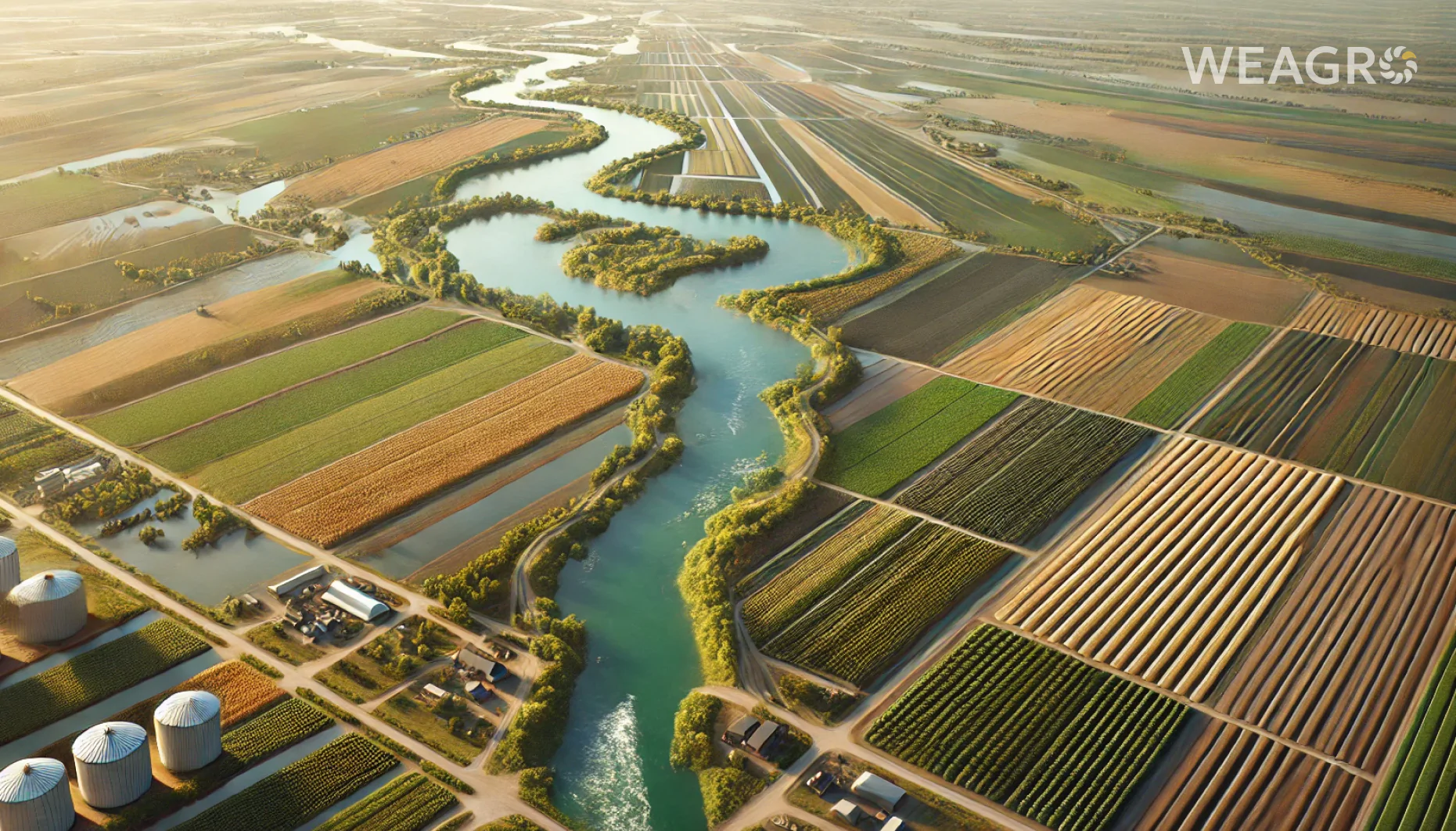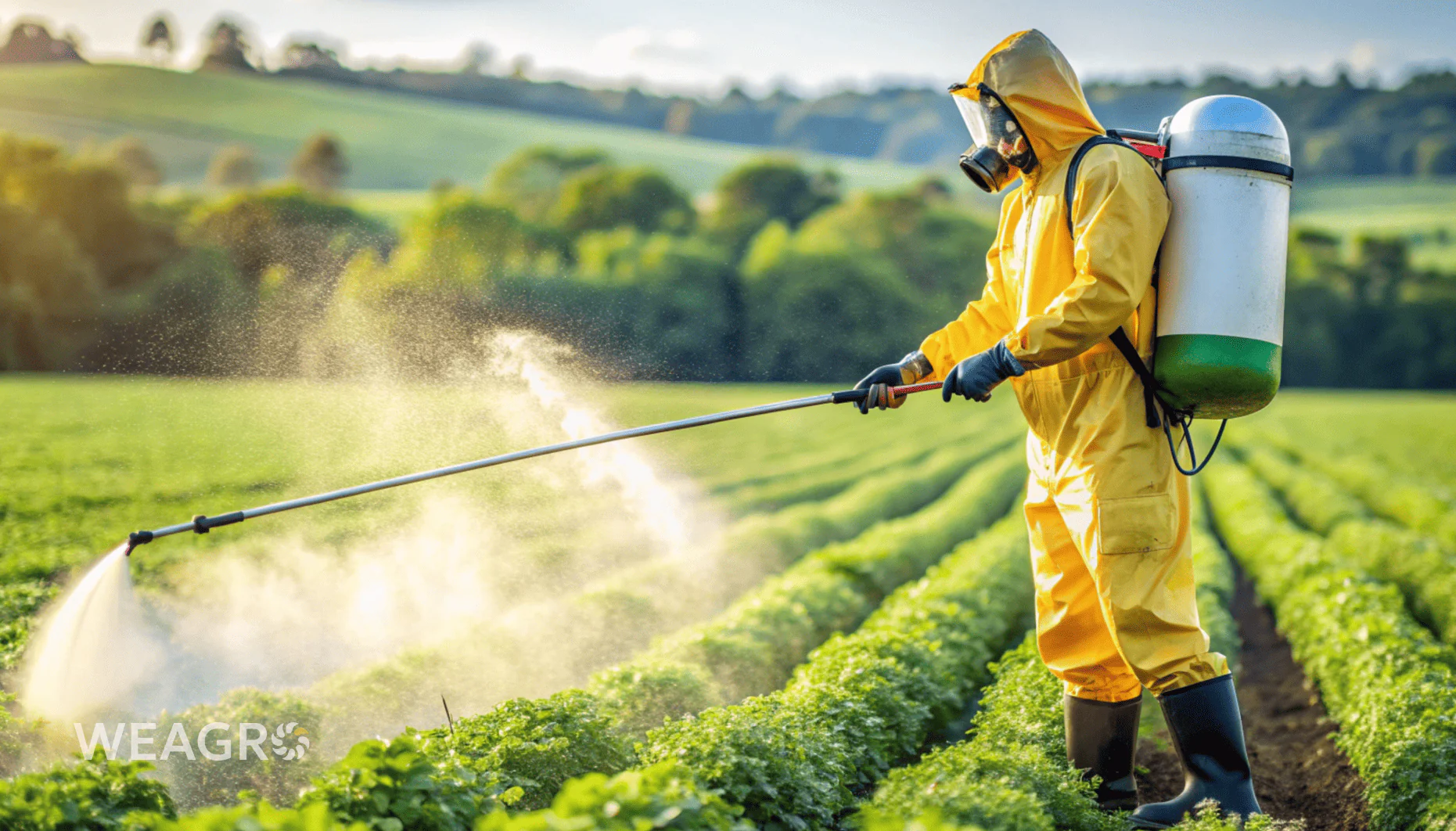Soil water erosion is one of the most common forms of land degradation in Ukraine, causing significant damage to agriculture annually. Rainwater flows wash away the top fertile layer of soil, leading to reduced crop yields. Erosion deteriorates the physical properties and chemical composition of lands, complicating their cultivation. Let’s examine in detail what water erosion is, its types and causes, as well as how to combat this problem.
What is Water Erosion
Water erosion is the process of destruction and washing away of the upper layers under the influence of rain and meltwater. The liquid forms on slopes where the water runoff speed exceeds the soil’s absorption capacity. Along with soil particles, the liquid carries away nutrients, humus, and microorganisms. This leads to deterioration of soil structure and reduction of its fertility.
According to FAO data, water erosion in Ukraine affects an area of over 13 million hectares, of which 10.6 million hectares are arable lands. Soil loss in eroded regions reaches 15-30 tons per hectare annually. Due to erosion, the yield shortfall of main crops is 36-47%. The ecological and economic damages from water erosion are estimated at 20 billion UAH per year.
Depending on the intensity of manifestation, water erosion is divided into normal and accelerated. The former occurs slowly, without causing significant damage to the land. The latter, caused by anthropogenic factors, exceeds the rate of soil formation by 10-100 times. It is the accelerated erosion that poses the main danger to agriculture.
It is important to understand the consequences of erosion for land restoration. Affected areas often turn into waterlogged territories and temporarily lose their ability to yield crops. Although soil tends to naturally regenerate over 5-10 years, its fertility significantly decreases. Moreover, the self-restoration process is accompanied by active weed growth, creating additional problems for agricultural use.
Read also: Soil erosion: causes, types, control measures
Causes of Water Erosion
The main causes of water erosion are:
- irrational land use – plowing along slopes, destruction of natural vegetation, grazing on eroded areas;
- non-compliance with anti-erosion measures – absence of buffer strips, terraces, embankments-ditches on slopes;
- climatic conditions – heavy rains, intensive snow melting in spring;
- relief features – steepness, length, and exposure of slopes;
- land degradation – destructuring, compaction, reduction of organic matter content.
In particular, plowing along the slope increases runoff speed by 5-7 times compared to cross-slope plowing. Excessive cattle grazing destroys the turf cover and compacts the soil, leading to a 20-30 fold intensification of soil washout.
Forest cover plays a special role in the development of erosion processes. As this indicator decreases, surface water runoff increases by approximately 20%. However, the period of water impact is limited to the time of flood or heavy rain. This is explained by the fact that the root system of forest vegetation prevents the degradation of soil as a natural collector of liquid, capable of accumulating moisture.
Types of Water Erosion
The main types of water erosion are:
- Splash erosion. Destruction of soil aggregates under the impact of raindrops.
- Sheet erosion. Uniform washing away of the top soil layer by small streams of meltwater or rainwater.
- Rill erosion. Soil erosion by water flows forming furrows, gullies, and ravines.
- Irrigation erosion. Soil destruction due to improper irrigation (excessive watering norms, increased water supply intensity).
Splash and sheet erosion have hidden signs that are difficult to detect, but they gradually deplete the soil. Linear forms are more noticeable but cause greater damage.
Sheet erosion creates small washouts that are technically easy to combat, but their presence significantly affects the quality of the arable layer. Due to its damage, it is often necessary to plow the lower layers of soil. Linear water erosion begins with small washouts about 20 cm deep, which gradually deepen and can reach a meter. With further impact of water flows, ravines form, whose walls eventually become overgrown with vegetation and begin to crumble, turning into gullies.
Read also: Intensive agriculture: definition, advantages and disadvantages
Water Erosion in Ukraine
Due to the dissected relief, soil and climatic conditions, and extensive agriculture, water erosion has become widespread in many regions of Ukraine. It reaches the largest scale in the Forest-Steppe and Northern Steppe, where the area of eroded lands sometimes exceeds 50% of the territory.
Intensive erosion is characteristic of the Dnieper region, Donbas, Black Sea region, Podillya, Carpathian region, and Transcarpathia. Here, soil washout on arable slopes annually amounts to 30-40 t/ha. Due to erosion, humus content has decreased by 30-40%, agrophysical properties have deteriorated, and deflation danger has increased by 35-40%.
The spread of erosion requires a comprehensive approach to land protection. Implementing a system of anti-erosion measures using modern IT tools is an important step for sustainable agriculture development and rational use of soil resources.
The most eroded arable lands are concentrated in Vinnytsia, Luhansk, Donetsk, Odesa, Chernivtsi, and Ternopil regions, where the average annual soil loss reaches 24.5-27.8 t/ha. From 1960 to 2015 alone, the area of eroded lands in Ukraine increased by 30-35%. According to forecasts, by 2030, their share may reach 60-70% of the total arable land area.
According to FAO assessment, the development of effective national approaches to combat water and wind erosion in Ukraine is significantly slowed down due to the complexity of institutional structures, lack of current soil erosion research, and absence of systematic land monitoring. An important step in solving this problem was the creation of the Ukrainian Soil Partnership in 2019 as part of a project funded by the Global Environment Facility.
The online service WEAGRO helps farmers make informed decisions for careful soil management. Thanks to up-to-date satellite images and vegetation indices, it’s possible to identify areas vulnerable to erosion and take timely measures to protect them. WEAGRO’s installment plan allows purchasing necessary resources for anti-erosion farming, increasing farm efficiency.
Water Erosion: Consequences
There are a number of negative ecological, agronomic, and economic consequences of water erosion:
- loss of the top fertile layer – humus, nutrients, and beneficial microflora are washed away along with fine soil particles;
- deterioration of physical properties – structure destruction, compaction, reduction of moisture capacity and water permeability;
- decrease in soil profile thickness, exposure of the root-containing layer;
- reduction of crop yields by 10-60%, depending on the degree of erosion;
- siltation and eutrophication of water bodies with erosion products, deterioration of water quality;
- complication of soil cultivation conditions, increase in fuel and working time costs;
- reduction of productive land areas due to the formation of ravines and washouts.
The intensity of water erosion depends on a combination of natural and anthropogenic factors. Careless attitude towards land, violation of agricultural techniques, and neglect of soil protection measures accelerate erosion processes, leading to catastrophic consequences.
In particular, the washout of the humus horizon on medium and heavily eroded lands reduces the reserves of nutrients by 1.5-3 times. The yield of grain crops on slightly eroded soils decreases by 10-20%, on medium eroded soils – by 20-50%, on heavily eroded soils – by 50-80%. Fuel costs for cultivating eroded lands increase by 15-20%, and labor productivity decreases by 20-30%.
A serious problem is the loss of humus in Ukrainian chernozems. During the period 1990-2010, its content decreased by 0.22%, which is especially noticeable in the steppe zone. The main reason for the depletion of soil humus is the acute shortage of organic fertilizers. The situation is complicated by the fact that the predominant use of nitrogen fertilizers does not solve the problem, but on the contrary, makes it more acute.
Measures to Combat Water Erosion

Rational use of eroded soils and their protection from destruction require the implementation of a complex of organizational-economic, agrotechnical, forest-meliorative, and hydrotechnical measures to combat water erosion. They ensure land protection and reduce degradation rates.
Ways for Farmers to Prevent Water Erosion
To counteract erosion processes, each land user should use soil protection techniques and follow zonal recommendations:
- implement scientifically based crop rotations with an optimal set of crops;
- minimize tillage across slopes, apply contour-reclamation organization of the territory;
- grow perennial grasses, solid-seeded crops, and green manures on slopes;
- conduct slitting, ridging, embankment, and other methods of runoff retention;
- apply optimal fertilizer rates, increase organic matter content;
- perform snow retention, regulate snow melting in spring to reduce surface runoff;
- maintain forest belts, avoid plowing steep slopes, create buffer strips of vegetation along contours.
Adherence to scientifically based crop rotations with a share of perennial grasses over 50% can reduce the intensity of soil washout by 10-20 times. Minimum subsurface tillage reduces soil loss by 2-4 times compared to traditional plowing. Growing green manures and mulching with post-harvest residues increases the anti-erosion resistance of soils by 30-40%.
Read also: No-till technologies: what it is, prospects in Ukraine
Ways for the State to Prevent Erosion
At the state level, land protection programs are developed and implemented, which provide scientific, legal, and economic support for rational land use. In particular, the following measures are taken:
- mapping and monitoring of eroded lands to control erosion rates;
- conservation of degraded and unproductive lands to restore fertility;
- development of regional soil protection agriculture programs taking into account natural and economic conditions;
- justification of anti-erosion organization of the territory, introduction of soil-protective crop rotations;
- economic stimulation of soil protection technologies implementation by farmers;
- forest melioration, construction of hydraulic structures on erosion-prone areas;
- increasing the responsibility of land users for violating the norms of exploitation of eroded areas.
An important element of anti-erosion agriculture is the proper cultivation of sloping lands. On areas with a slight slope (up to 10-12°), the land is cultivated in strips or terraces up to 3 meters wide are created. Cross-slope cultivation shows particular effectiveness – it forms a specific relief of the arable land, where furrows and rows of vegetation naturally retain water runoff, promoting better moisture absorption by the soil and increasing its fertility.
In Ukraine, a number of state programs for land protection are being implemented, including the “Soil Protection System of Agriculture” and “Preservation and Reproduction of Soil Fertility”. However, most anti-erosion measures fall on the shoulders of the farmers themselves and require coordinated efforts on the ground.
Comprehensive implementation of soil protection farming systems can reduce the intensity of water erosion by 2.5-3 times and increase the productivity of eroded lands by 25-40%. State programs of partial compensation for anti-erosion measures stimulate the rational use of problematic lands. However, the rate of their degradation still exceeds the scale of conservation and renaturalization.
Conclusion
Water erosion is one of the most dangerous forms of land degradation in Ukraine, causing significant economic and environmental damage annually. Splash, sheet, and rill erosion lead to the washing away of topsoil layers, loss of nutrients, and reduced fertility. Due to irrational land use, the problem is exacerbating.
To protect lands from destruction, it is necessary to implement a complex of anti-erosion measures – optimization of land structure, soil-protective crop rotations, forest melioration, buffer strips. Satellite monitoring using the WEAGRO service allows assessing the scale of erosion and controlling the effectiveness of soil protection technologies. A comprehensive approach will help halt soil degradation and preserve them for future generations.









